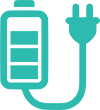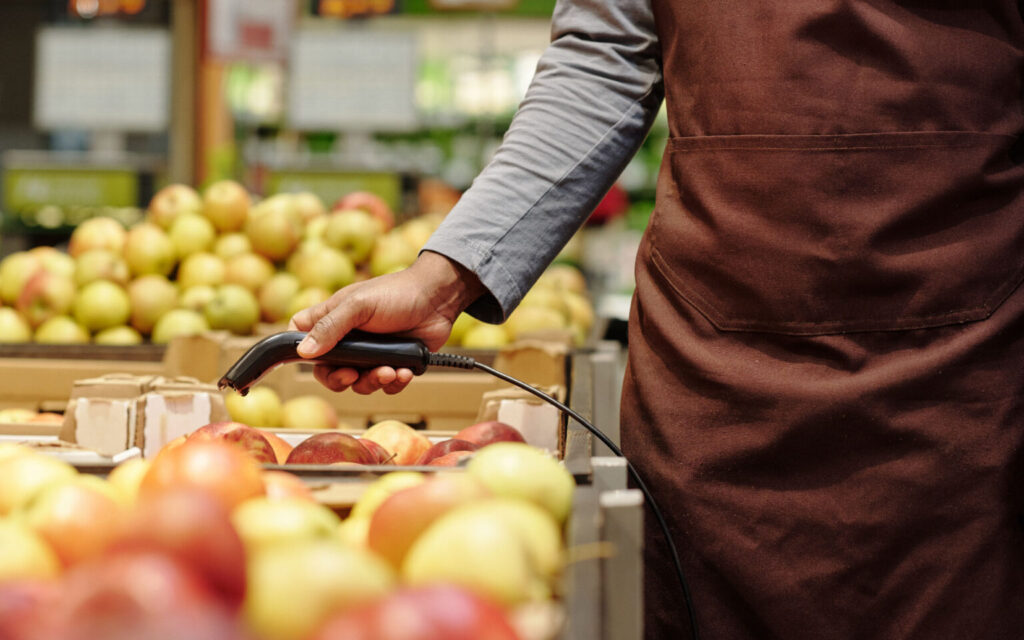Regardless of what economic times we fall into, the need for groceries will always be there. People will never stop purchasing food, so the demand for groceries will never fade. Because of this, many entrepreneurs have thought about opening a grocery store business of their own.
While opening a grocery store business is similar to starting a convenience store, there are many aspects that you need to look out for before you open your store. In this niche, you’ll find that big chains are dominating the grocery store industry.
So, what will it take for you to make a dent in the industry?
You can open a grocery store in 2024, and still make it a profitable business regardless of how competitive the market is. With diligent management, the odds are stacked in your favor. And if you’re following a proper roadmap nothing can stop you (a small business owner) from earning good profits.
The Modisoft grocery store startup guide will cover everything you need to know in order to get your grocery store business off the vine. So, whether you’re a seasoned business owner or a first-time entrepreneur we’ve got you covered with the tools needed to open a profitable grocery store in 2024.
Pros & Cons of Starting a Grocery Store In 2024
Starting a grocery store is considered rewarding and profitable, while the ladder toward profit is no easy feat. You have to research your business industry thoroughly and understand your target audience before you’re able to take your first step.
Here are the top pros and cons that are a must for you to know before you start your grocery store business.
Pros of Starting a Grocery Store
Security in Grocery Demand
Considering the fast-paced environment we live in, it’s easy for businesses to get obsolete with time. For instance, if you go back in time, you’ll see that most items like VCRs, film shops, and floppy disks are hard to come by in today’s world.
Even today, after the revolution of AI, many industries are under threat of becoming obsolete. However, when it comes to grocery stores, they are a safer option to consider. They still need to adapt to modern technology, but it would take unprecedented economic times for grocery stores to become obsolete.
Amazing Perks & Rebates
Entering the grocery store industry comes with its perks and discounts. As a seller, you get the opportunity to provide massive discounts and enjoy perks on certain products/services. This is one of the major benefits that a grocery store owner gets. You can join a rebate program, differentiate high-profit and low-profit products, get inventory on credits, and much more.
Easily Build Relationships
As a grocery store owner, you’ll be able to forge relationships and partnerships with other businesses. If you’ve selected a neighborhood location and you find that you’re the only one, then it is super easy to convince other businesses to become referral partners. You’ll get the first-mover advantage in that area which will increase your chances of attracting an audience.
Potential To Earn Profits
The profit margin of essential food products is generally low, but you can still earn good profits by developing the right pricing strategy. The more products will sell, the greater the profits you’ll make. Independent grocery owners also consider adding more revenue streams by increasing more relevant products according to the season.
Wide Product Offerings
Grocery stores have the advantage of having a wide market that is not limited to certain niches. From low-income groups to high-income groups, you get customers of every type. To increase your chances of getting optimal benefits, you can consider adding the products your customer base needs. For instance, you can add kitchen spices, cleaning products, bath products, hygiene products, canned food, etc.
Cons of Starting a Grocery Store
Managing Inventory Can Be Challenging
Inventory management is one of the crucial aspects of running a profitable grocery store. You need to get rid of early stockouts and prevent overstocks. With the high level of transactions, it is a challenge for grocery store owners to track and manage inventory effectively. These issues can be resolved by automating your process by adapting modern technology like Modisoft Inventory Management System.
Highly Competitive Market
The grocery business is a booming industry as new brands are getting established in the market. Shopping malls are introducing grocery stores to accommodate every customer’s needs. This means that this is a highly competitive market dominated by Walmart, Kroger, Costco, Amazon, and many others. But you can still make your first move by identifying the ideal neighborhood location.
Overhead Costs
Overhead costs are one of the major obstacles that prevent most entrepreneurs from opening grocery store businesses. With a physical store, you must pay rent, insurance, renovate the store, security, and a whole lot of other expenses. Although it varies depending on the location and management skills you have, a slight mistake can make you exceed your budget. This could be overcome by having the right business plan that can help you get maximum funding, avoid unnecessary spending, and manage inventory.
The Future of Grocery Retail
The grocery industry is not only highly competitive but also a bit complex. The simple neighborhood stores have now evolved into international mega-chains of 3,000+ stores carrying thousands of products. To serve the consumer desire for quality, value, and choices, the grocery industry evolved rapidly. Therefore, you need to understand the future of grocery retail before planning to open one.
In 2024, as the diversity of the consumer has increased dramatically across many dimensions, the industry is becoming increasingly creative in attempting to fulfill consumers’ desires while striving to achieve profitable growth.
The top forces that are disrupting the nature of the grocery business include
- Change in Consumer Behavior: Consumer behavior is changing rapidly. According to Statista, more than 51% of consumers preferred items on sale more than usual. Sales are still becoming the driving force to attract consumers, but the rise in online retail and an increased focus on quality are also shifting shopping habits.
- Technology Advancement: As more customers seek convenience – the smoother checkout process, less crowd, and quicker delivery becomes essential to retain customers. Grocers need to adopt modern technology such as point of sale (POS) systems, and customized apps, to deliver personalized yet smooth customer experiences.
- Branding: Marketing and personalized content will play a vital role in making your grocery store stand out. Just like big names in the industry like Walmart, grocery store owners need to make a presence both digitally and in-store to increase foot traffic.
Cost to Open a Grocery Store
The biggest question that almost everyone asks when planning to open a grocery store is the initial cost, but there is not one specific number.
The cost of opening a grocery store can differ depending on various factors such as the type of grocery store model you adopt, products you offer, and location. A small grocery store startup cost can be $100,00 and above depending on the following variables
- Initial Inventory size and it’s quality
- Grocery store equipment such as CCTV, POS, and more.
- The amount you need to pay for rent, deposits, etc.
How to Open a Profitable Grocery Store
In the modern world, you have two options to open a grocery store business. You can either start by opening a brick-and-mortar shop or prefer an online e-store. You can even implement both business models if you’d like.
But starting a successful grocery store business from scratch involves many factors. From registering your company to opening a business bank account, you need to fulfill every requirement before launching your first-ever grocery store.
By following the steps discussed below you can start the process of opening a profitable grocery store business.
Step 1: Create a Grocery Store Business Plan
A clear grocery store business plan is essential for success as an entrepreneur. It will help you map out the important strategies while ensuring that your business is set up to thrive. An ideal business plan should address the following key points
- Executive summary
- Company overview
- Customer analysis
- Financial analysis
- Financial plan
- Marketing plan
- Operating and management plan
Naming Your Grocery Business
Your grocery store name can make a difference. If you don’t have any name in mind, you can brainstorm a name ensuring that it is unique and relevant to your business type. When registering your business name make sure to check originality using:
- Federal & state trademark records
- Social media platforms
- Website domain name for its availability
- State’s business records
Finding the Right Location
As grocery store owners make a profit by selling more items, therefore finding the right location is essential to attract a larger audience. You’ll need to open a grocery store business in a place that lots of people visit or pass by regularly. The top locations that you can consider when starting a grocery store are:
- Shopping Centers: If you have more budget to spend or have secured funding, then opening your doors in a shopping center can be a great way to enhance visibility and convenience.
- Use Demographics: By knowing the number of people living in a certain area you can determine potential customers and their needs. This can help you to open a store that becomes profitable right from the beginning.
- Small Towns & Suburbs: There is always competition in big cities, therefore starting your grocery store business in suburbs or small towns can be more profitable.
Know How Your Grocery Store Will Make Money
Grocery stores sell basic human needs products that are consumed every day. It includes a variety of items like beverages, alcohol, food, etc. However, despite selling a wide range of items most grocery store owners have a slim profit margin ranging from 1-3%.
To improve your profit margin, you can add fresh meat and other seasoned products. Modisoft POS can also be effective by letting you spot the right trends and helping you track inventory to make informed decisions.
Step 2: Forming a Legal Entity & Setup Taxes
Forming a legal entity comes with its benefits. If your business is registered as an LLC or corporation and happens to get sued, you will not be held personally liable. You can form a legal entity by registering your business as a sole proprietorship, limited liability company (LLC), corporation, or partnership.
Forming an entity can be a tedious and complex task, so we would highly recommend working with professionals who specialize in those areas.
Step 3: Obtain a Grocery Store Permit and license
Obtaining a grocery store permit and license is necessary to avoid hefty fines that can even cause your business to shut down. To help you get most of the permits and licenses ahead of time, we’ve listed down the key permit and license requirements needed to open a grocery store.
- Federal Business Licensing Requirement- Most states made it mandatory to obtain a grocer’s license. You can check with SBA’s reference to state licenses and permits.
- Food Regulation- When selling food, you need a permit from the Department of Health to pass the health inspection.
- Certificate of Occupancy- This permit is needed to confirm that all building codes, zoning laws, and government regulations have been met.
Step 4: Grocery Store Equipment List
The main component of any grocery store is the equipment. You’ll need to purchase the necessary equipment to run and manage your store efficiently. While the equipment list may vary depending on the inventory, space, and type of store you plan to open, the following equipment should cover the basics:
- POS system
- Commercial freezers and refrigerators
- Shopping carts
- Signage
- Bags
- Shelving
- Industrial Cleaning Supplies
The list goes on and on, but these basics should provide you with a solid outline for the general starting equipment.
Step 5: Connect with Vendors
Connecting with vendors is one of the most crucial parts of your grocery store operations. You’ll need the right product at a minimum cost to make a profit out of it. As a new store owner, you need to study the target market to understand the type of product you’ll need, as well as your purchasing power.
Understand Sourcing Options
Now when you have the list of products needed to cater to the wishes of your target audience it’s time to understand your sourcing options. To stock your grocery store you have three main options. You can use any one or a combination of these sources.
- Manufacturers- There are two perks of sourcing products directly from manufacturers. You get the cheapest unit cost, as well as the opportunity to create custom orders. However, one drawback is most manufacturers work on minimum order quantity, so you’ll need to order hundreds or thousands of units.
- Wholesalers- If you know how to price your products correctly you can go with wholesalers. They usually have higher unit prices than manufacturers but handle communication, importation, and warehousing on their own.
- Independent Suppliers- If you can manage unpredictable and irregular supplies you can go with independent suppliers like artisans, and independent makers.
How To Find Vendors for Your Grocery Store
Once you’ve picked the sourcing options it’s time to find the right supplier. Here you can consider utilizing the following channels:
- Trade Shows- You can reach the pool of manufacturers, negotiate deals faster, and see samples in person by going to a trade show.
- Marketplace- You can find online trade magazines and industry publications that can lead you toward the number of suppliers.
Step 6: Grocery Store Layout
The layout of the grocery store can have a major impact on your sales. You need to develop a store layout strategy to maximize sales, enhance visibility, and improve your customer experience. Once you understand your target audience you can easily go with the following basic principles to plan an effective grocery store layout.
- Focus On Entry & Exit Points: You can place candies, newspapers, magazines, and other items that people can easily grab on the way out. This strategy is common and can be effective in increasing impulse purchases.
- Pay Attention to Store Curb Appeal: To enhance your store visibility you can use proper lighting and signage to create an inviting atmosphere.
- Put Grab-and-Go Items First- Products such as snacks, beverages, bread, milk, eggs, lunch meats, candy, etc. need to be placed at the front of your store to provide convenience for customers as they enter your store for quick news.
Let’s Open Your Grocery Store Today
Opening a grocery store in 2024 is still profitable. You need to build a strong base and stick to a roadmap that helps you to succeed. Modisoft is here to help you out in making your grocery store business successful. We provide you with customized applications, integrated hardware, and 24/7 customer support to answer any of your questions you may have.
FAQs
1) How to calculate your grocery store profit margin?
The formula that you can use to calculate your monthly profit is to divide net profit by total revenue and multiply that by 100.
2) What Items Are the Most Profitable in Grocery Stores?
The most profitable grocery store items include
- Prepared food
- Batteries
- Deli meat and cheeses
- Butcher and wholesale meat
- Cosmetics and beauty supplies
- Cereal
- Non-grocery items like cleaning supplies
3) How Many People Do You Need to Run a Grocery Store?
The grocery store business is often hard to run. A startup grocery store typically needs a team of a minimum of 4-5 people to assist customers, manage sales, and replenish inventory.























